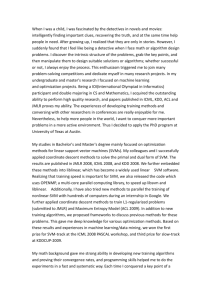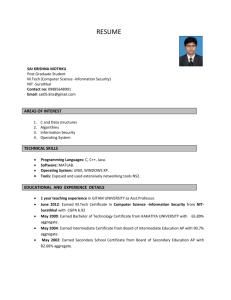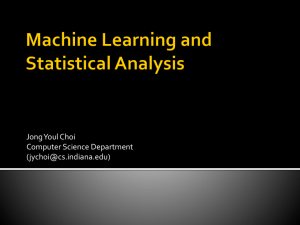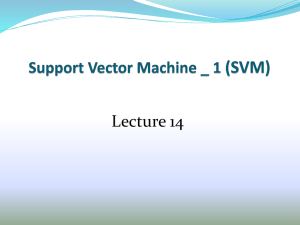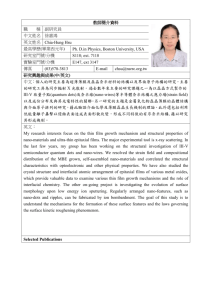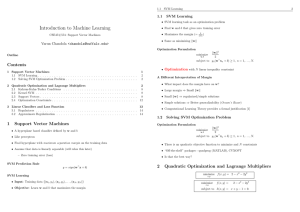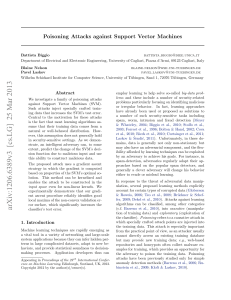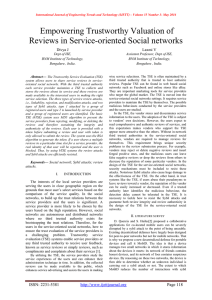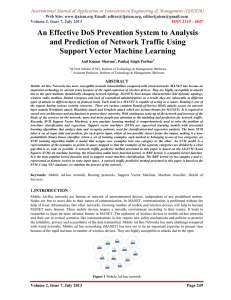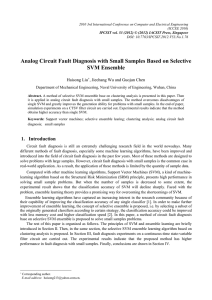NTU/Intel M2M Project: Wireless Sensor Networks Content Analysis
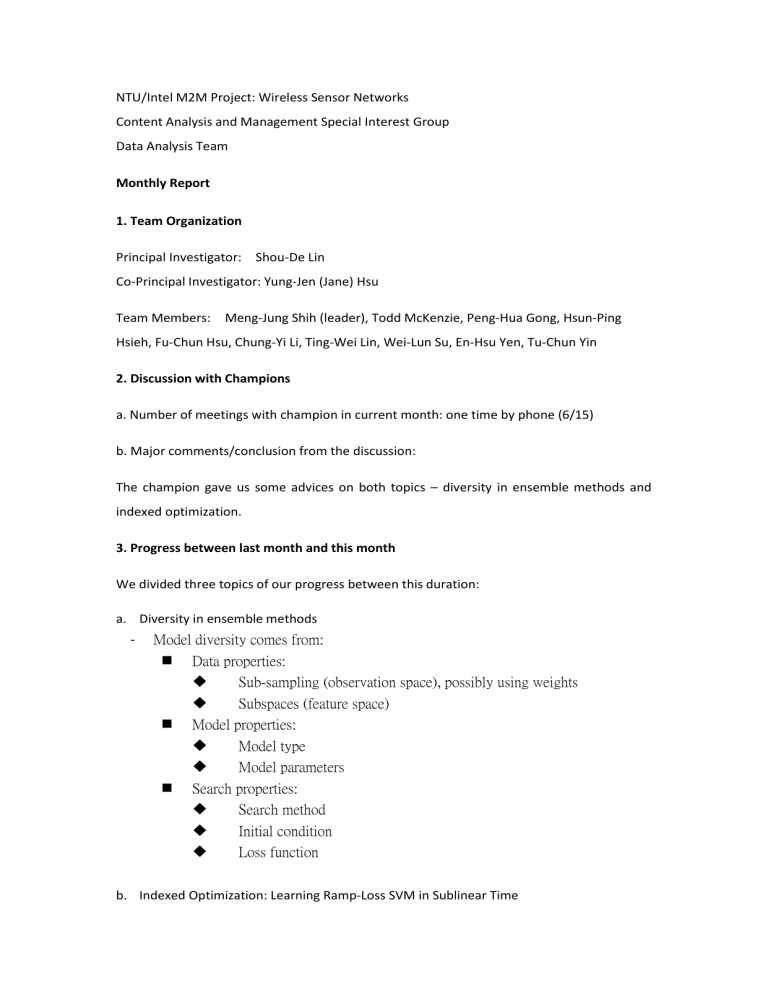
NTU/Intel M2M Project: Wireless Sensor Networks
Content Analysis and Management Special Interest Group
Data Analysis Team
Monthly Report
1. Team Organization
Principal Investigator: Shou-De Lin
Co-Principal Investigator: Yung-Jen (Jane) Hsu
Team Members: Meng-Jung Shih (leader), Todd McKenzie, Peng-Hua Gong, Hsun-Ping
Hsieh, Fu-Chun Hsu, Chung-Yi Li, Ting-Wei Lin, Wei-Lun Su, En-Hsu Yen, Tu-Chun Yin
2. Discussion with Champions a. Number of meetings with champion in current month: one time by phone (6/15) b. Major comments/conclusion from the discussion:
The champion gave us some advices on both topics – diversity in ensemble methods and indexed optimization.
3. Progress between last month and this month
We divided three topics of our progress between this duration: a.
Diversity in ensemble methods
-
Model diversity comes from:
Data properties:
Sub-sampling (observation space), possibly using weights
Subspaces (feature space)
Model properties:
Model type
Model parameters
Search properties:
Search method
Initial condition
Loss function
b.
Indexed Optimization: Learning Ramp-Loss SVM in Sublinear Time
Linear SVM has been very efficient. However, learning still takes time linear to the data size.
Several challenges in Sublinear-Time Learning:
A problem with sublinear-sparse solution: Ramp-Loss SVM
An optimization process involving only sublinear number of data: An outlier-free convex relaxation
An oracle for useful samples. (avoid unnecessary I/O): High dimensional
Indexing for ANN search
Experiment results c.
Attacks detection on wireless sensor network:
We defined characteristics of Sybil attacks:
Behavior-wise characteristics: choke point
Trust-wise characteristic: link strength
Data-wise characteristics: fake reviews
4. Brief plan for the next month a. Attack Data Set Generation: We will choose three real datasets as the target dataset to study and to discover common features of Sybil attacks (including 3 kinds of attack topologies, fraction of compromised nodes, fraction of attackers and fraction of seeds ).
And generate artificial attack data set according to these features. b. Develop a novel Sybil attack detection mechanism .
5. Research Byproducts
a. Paper: N/A
b. Served on the Editorial Board of International Journals: N/A
c. Invited Lectures: N/A
d. Significant Honors / Awards: N/A


